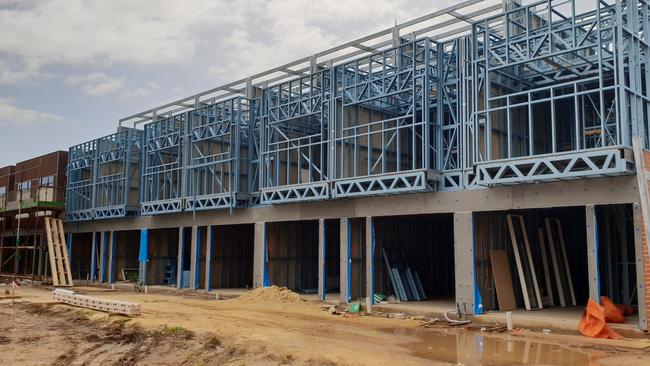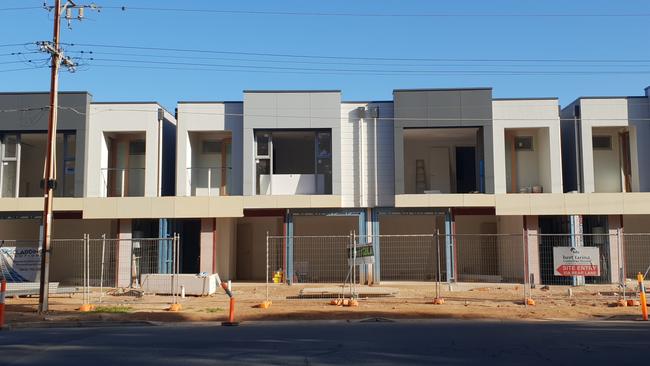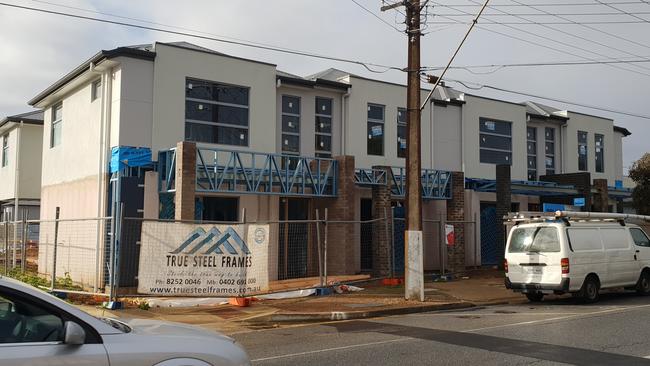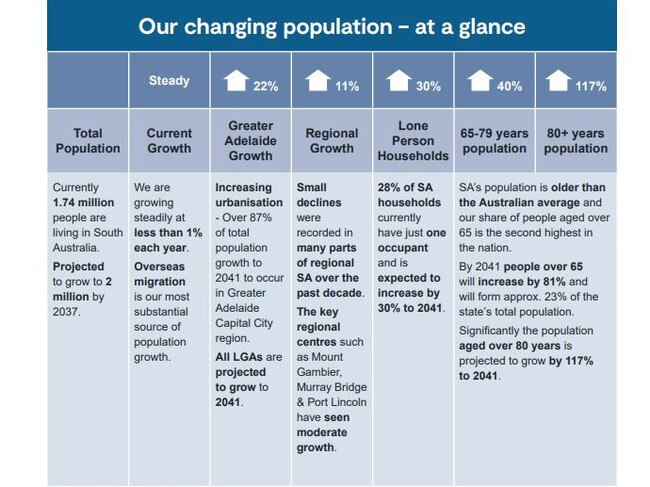Report identifies thousands more homes to be demolished across Adelaide as urban infill continues
An official report has identified thousands more homes will be demolished across Adelaide as urban infill continues under new planning rules released for public comment.
North & North East
Don't miss out on the headlines from North & North East. Followed categories will be added to My News.
Urban infill will continue across Adelaide under new planning laws released for public feedback, with tens of thousands of homes likely to make way for the new dwellings.
A discussion paper prepared by the Planning Commission says infill has been the biggest provider of new housing over the past decade.
The Department of Planning, Transport and Infrastructure (DPTI) had found 70 per cent of new housing development in 2017 occurred within established urban areas while the demand for land on Adelaide’s fringes decreased.
“Recent analysis by DPTI has identified land supply potential for almost 120,000 new dwellings within the existing footprint of the metropolitan area — 63,500 in greenfield areas and 53,500 stemming from infill development opportunities, mainly concentrated in the metropolitan area and its growth corridors,” says the paper.

The councils which have approved the most new developments have been Marion, Charles Sturt and Onkaparinga.
The Planning Commission paper says more than 2000 properties are being demolished each year, with Port Adelaide Enfield and Charles Sturt approving the most.
“Minor infill — in the form of demolitions and re-subdivisions — is playing a significant role in the provision of new land within our existing metropolitan areas, contributing about 39 per cent of the overall housing supply each year,” it says.
“Demolition is particularly prevalent in inner and middle ring suburbs within 10 kilometres of the CBD, with comparatively few demolitions occurring in the outer suburbs.”

The number of smaller, double-storeyed dwellings such as townhouses and units had accelerated over the past 10 years in many parts of Adelaide, with no signs of slowing.
“Additional density is being achieved by a gradual move to the development of two storey housing,” says the paper.
“As an example, over the ten years to the 2016 Census the proportion of two or more storey semi-detached dwellings in South Australia more than doubled.
“ … this steady increase in the importance of minor infill to the overall settlement pattern of metropolitan Adelaide is set to continue for the foreseeable future.”

The Planning Commission says one of the key objectives of its new planning code — released for public consultation on Tuesday — was ensuring urban infill was better managed.
“The new code must address the transformation of existing neighbourhoods by minor infill,” it says.
“In particular it must encourage a better range of public spaces and activity into densifying neighbourhoods.”

The commission’s paper says it is “vital to encourage high-quality design in the new planning system in order to achieve higher density accommodation, while at the same time developing truly compelling environments that people really want to live and work in”.
“This focus on good design should apply equally across all development; housing, places and spaces, in metropolitan Adelaide and in suburbs and regional centres across the state,” it says.

“ … masterplanned major infill developments have been relatively successful in achieving these aims, while small-scale, progressive, minor infill within existing suburbs have been less so.
“High quality design is critical to infill development in existing neighbourhoods.”
The commission says the new planning code “should provide clear guidance for managing legitimate community concerns” about urban infill.
MORE NEWS
Planning code released for community consultation
New planning code has 3000 pages of changes
Campbelltown has smaller block sizes approved
These included on-street carparking, privacy, overshadowing, local amenity, risks to heritage and character, site coverage and canopy cover.
“At the neighbourhood level, the consolidation of housing, people and infrastructure into urban areas presents additional challenges,” says the paper.

“For example, temperature extremes are often maximised in built up urban areas, where historical building patterns and a concentration of dark road surfaces create heat island effects.
“In addition, the ground in urban areas tends to be covered by roads, buildings and other infrastructure, preventing storm water infiltration.”
The paper predicts that, as urban infill continues across Adelaide, stormwater run-off will increase by two and a half times more than drainage systems were designed to manage.
The discussion paper and the draft planning code are available here.
